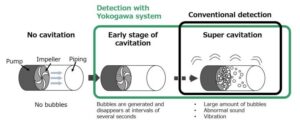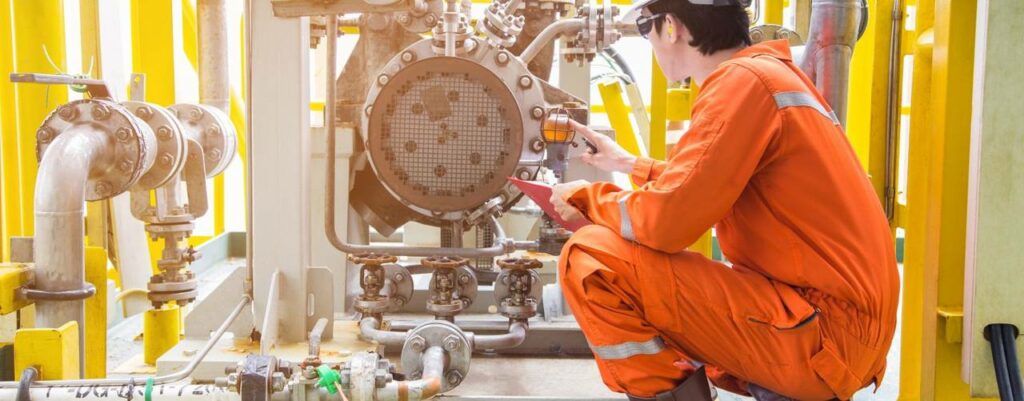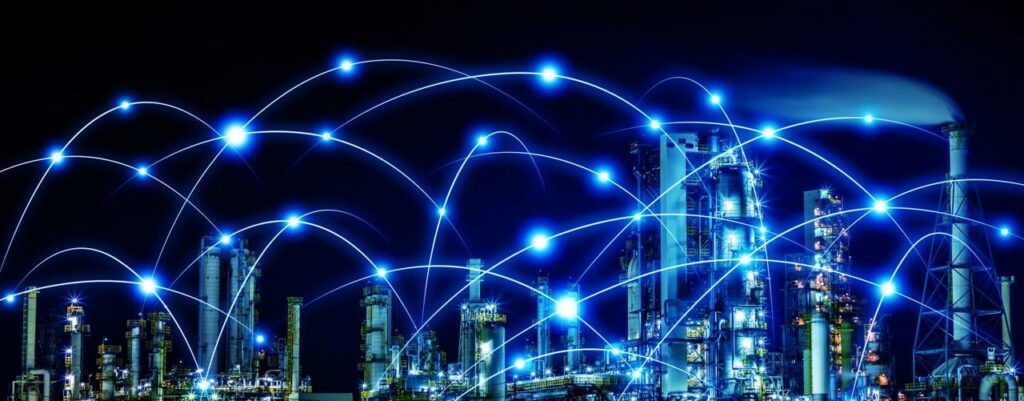By using an IIoT application to precisely evaluate the data captured by differential pressure transmitters, it is possible to detect pump cavitation while it is still at a very early stage.
Pumps used in process and production plants are often susceptible to cavitation damage. It’s a well-known problem: the suction effect on the suction side can create a temporary vacuum. Even at normal temperatures, this vacuum can cause vapor bubbles to form in the fluid. This physical effect not only reduces the size of the pump or piping’s pumping cross-section; cavitation also inflicts constant damage on the pump components. The pump’s lifetime is dramatically shortened as a result.
It is difficult to detect signs of such wear at an early stage, in other words before serious damage has a chance to occur. However, a new IIoT system now solves this problem and helps plant personnel prevent pump damage or, in the worst case, total failures by taking suitable, timely corrective action.
How it works
Even minuscule changes in the differential pressure on the pump’s suction side are detected by a highly precise pressure transmitter, which forms part of the IIoT system. The pressure sensor transmits this data to the associated evaluation system in real-time. By evaluating and analyzing the pressure data obtained in this way, it is possible to draw inferences about the onset or existence of cavitation. This information is invaluable for maintenance purposes because it enables long-term maintenance interval planning plus direct intervention where needed. Costly repairs are avoided.
Problems and causes of poor pumping
In almost any plant in the process industry, liquid (raw) substances have to be moved from point A to point B. Depending on the volume to be moved, the pumps which are used for this purpose can be extremely expensive to purchase. Pump damage or – even more so – failure, especially in combination with very large nominal sizes and very high performance, will result in considerable productivity losses and, if the worst comes to the worst, could bring the complete plant to a standstill. In practice, therefore, many plant operators see no alternative but to make their systems redundant. This complexity, and the costs it involves, can be eliminated by monitoring the process conditions continuously.
Cavitation is a purely physical phenomenon: the suction effect creates a temporary vacuum on the pipe wall. Ambient temperature suffices to cause vapor bubbles to form in the fluid. If the fluid then strikes the pump or if it enters the pump impeller, the vacuum changes to positive pressure and the vapor bubbles collapse or “cavitate”. The cavities which are formed in this way are filled with vapor. This so-called “microjet” travels at the speed of ultrasound and is strong enough to erode the impeller’s metal surface. The cavitation of the vapor bubbles simultaneously produces enormous vibration in the system and the sound level rises accordingly. This noise is clearly audible.

Figure 1 shows the various phases of cavitation. In many cases, cavitation is only discovered when the operating or maintenance personnel determine acoustic or vibrational anomalies. However, by this time the pump has already suffered serious damage and other attached components – like the motor which drives the pump, local monitoring instruments and upstream or downstream piping – are likewise affected.
Figure 1 shows the various phases of cavitation. In many cases, cavitation is only discovered when the operating or maintenance personnel determine acoustic or vibrational anomalies. However, by this time the pump has already suffered serious damage and other attached components – like the motor which drives the pump, local monitoring instruments and upstream or downstream piping – are likewise affected.
Since cavitation presents such big problems, it is taken into account to a certain extent by means of the piping layout when designing a new plant. Yet processing operations, plant states, and environments inevitably change over time, frequently resulting in conditions that are conducive to cavitation. Last but not least, improper handling by plant personnel can be a further cause of cavitation.
What can you do to prevent cavitation? Read part 2 of our article!




